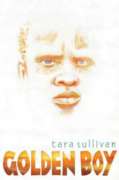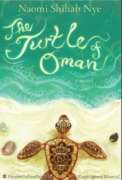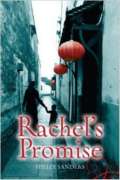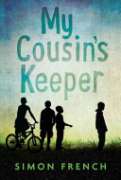
One book . . .
Two readers . . .
Two perspectives . . .
Your Take?
A Thematic Dialogue on Selected Books
Movement (or relocation) Across Communities
by Holly Johnson and Marilyn Carpenter
April, 2015
.

Golden Boy
Holly: Reading Golden Boy was a terrific experience, Marilyn! The character of Habo, a Tanzanian teen who flees for his life because of his albinism, came alive to me through this narrative. The reality that those in smaller villages saw him as both an anomaly—a zerozero—while at the same time as lucky for hunters and traditional medicine men (and thus, they want to kill him for his body parts) was pretty astounding. And while the premise of the plot sounds gruesome when I talk about it, the author did such a great job explaining how Habo could be both hunted and feared, that the story was fully realistic. The cultural nuances, the complex human drama, and then Habo’s growth as fully human, Tanzanian, and African was so well done. The story has really stayed with me, even though I finished it a few weeks ago. Part of that may be because when I was a Peace Corps Volunteer in Botswana, I had a student with albinism, where the bias against such a condition was not present, but he was somehow “other.” Thinking about that young man while reading this book made it more realistic, and Habo’s empowerment keeps readers from feeling overly sorry for Habo. Habo doesn’t need a reader’s pity; he is an inspiration, as is this book.
What did you think about it, Marilyn?
Marilyn: I agree this book is an inspiration. It haunts me. I keep thinking of Habo and the courage and strength he discovers in himself. I came on this book in an interesting way. I was visiting our grandchildren who live in Cohasset, MA. We decided to visit a local, independent bookstore , Buttonwood Books and Toys, which is close to their home to purchase some new books. I was amazed to see several authors there signing books. One of them was Susan Cooper! Another was Tara Sullivan, the author of Golden Boy. I had an interesting conversation with her and purchased the book for myself. On the plane ride home to Washington, I read the book. I was thrilled to have discovered the book and found it an engrossing read. Since then I have recommended it at several conferences. Recently, I heard a minister speak about the school his church sponsors in Tanzania and the plight of the albino in that area. It affirmed the stories in the book. I am especially pleased that Sullivan has listed nonprofit organizations working to help people with albinism to give readers a way to learn more about Habo’s story.
One of the strengths of this book is the characters Sullivan creates. I especially like Kweli, the blind artist who offers Habo refuge in his home and helps Habo discover his own artistic abilities. Kweli guides Habo with such wisdom giving him opportunities to gain independence and confidence. Sullivan is skillful in keeping this story from being tragic with the interactions between Kweli and Habo and Kweli’s niece who Habo is attracted to. As the story unfolds Habo becomes more than his albinism as he experiences the usual development of a teenager. I am recommending that this book be a choice for students in a World Literature class I used to teach at our University. I am glad to see that it has won several awards.
Holly: Your attention to Kweli is well noted! What I loved was how he was able to lead Habo into seeing Habo as African, not albino, and that could be done because Kweli was able to “see” beyond the visual marker where most others got stuck when looking at Habo. I agree that this would make a great addition to a World Literature Class, and find the book makes a great addition to any theme set that addresses survival and bias. It was an exciting story in which readers can experience the danger of Habo’s existence because of people’s bias. It shouldn’t be lost on us that this bias is very similar to our country’s treatment of those who fall outside the dominant mainstream because of their skin color.
Marilyn: I agree this book would spark a discussion on how we treat others who are different than us.
.

The Turtle of Oman
Holly: What is interesting about this book, Marilyn, is the dual themes of connection and disconnection. Young Aref is moving to Michigan from the country of Oman so his parents can earn their doctoral degrees. They anticipate being gone for three years, and Aref’s father has already flown to Michigan to set up their apartment. Aref only has a week to say good-bye to all the people, places, and things he loves before he and his mother also depart. I think the best part of this book for me was Aref’s grandfather Sidi, who helped Aref not only say good-bye, but showed Aref how much Aref was a part of his home country, just like the turtles of Oman, who go away but continue to return to their home beaches in Oman. I think this would make a really nice read aloud that would encourage young people in the USA to know more about Oman and its beauty. The author did such a great job of describing that beauty, Oman is now on my “want to see” list.
I am starting to see a grand narrative involving movement in our book choices for this month,
Marilyn: The World Literature class I mentioned in our discussion about Golden Boy has as one of its themes – Crossing Borders. The books we read for that theme focused on characters moving through experiences that caused them to grow and change. The Turtle of Oman has the same theme. The character, Aref, is not only moving to another country, he must move in his thinking to change from a dearly loved place to a new, unknown place, he is crossing borders in more than one way. Just as Habo has Kweli in Golden Boy, Aref also has a guide, his grandfather, that helps him make the needed changes.
I love this book for many reasons. Naomi Shihab Nye has a gift for making words sing across the page and she has created characters that will last in the memory long after the book is finished. One of the endearing characteristics of her characters is how they love books and words. Aref engages in a family tradition: “Discovering Something New Every Day,” the family motto. They list their discoveries on a computer or in a notebook. Aref’s lists are sprinkled throughout the book. The family also relishes a good book. The scene where Aref chooses which books to take with him to America, is endearing. There is another reason this story will remain in my heart. As you mentioned there is a strong relationship between Aref and his grandfather. I am relishing my relationship with my grandchildren. It was enjoyable to read about how Aref’s grandfather nurtures his grandson. Even though this book could be considered a book for primary age group I think it is also a cross-over book that will appeal to adults for the reasons I enjoyed it. So Holly, I see lots of ways that this books as well as the others we are discussing have a narrative of movement or change.
Holly: The intergenerational relationship in both Turtles and Golden Boy is another aspect of these stories that I just noticed, Marilyn. The grandfather role of Kweli in Golden Boy and Aref in Turtles make for great models for young people. Thinking about their relationships with their grandparents, and what they learn from those relationships would make for interesting discussions and how knowledge and culture are transferred within families.
Marilyn: The rapid changes we are experiencing in our society has impacted relationships between grandparents and their grandchildren. When I was growing up, I was very close to my grandparents. My maternal grandmother lived with us from the time I was two. I visited my paternal grandparents often. We had many events that included my grandparents. Our three children were very close to my parents because we also all live in the same town. However, my three grandchildren are spread out across the country. We may see them once a year, sometimes not that often. Many friends my age face the same challenges in building a relationship with their grandchildren. That is one of the reasons that I found the grandparent part of Turtle so endearing. I think the description of that relationship will resonate with children and their grandparents. There’s an idea. A grandparent could read aloud Turtle over FaceTime with their far away grandchild and then have a great discussion with that grandchild.
.

Rachel’s Promise
Holly: The narrative of movement continues, Marilyn, with Rachel’s Promise, a piece of historical fiction about the pogroms in Russia, and how Rachel and her family make the decision to travel to the USA via Shanghai. I really liked this story, as I has no idea that Russian Jews went to Shanghai and then onto America. The train journey across the Trans-Siberian railway was amazing, and then the hardships the family had to endure while in Shanghai so as to make enough money to book passage to the States were heart-wrenching. Similar to Golden Boy in both the themes of persecution and the protagonist’s courage and empowerment, Rachel’s Promise will also create reader interest and inquiry. I know I wanted to know more about the Jews in Shanghai, as well as some of the other plot situations in the novel that addressed what would eventually build up to the 1917 Russian Revolution. This book is the second in a series of three, but I read it as an independent story. I really am keen to know what happened to Rachel and whether or not she became the writer she was becoming in Shanghai. I also want to know if she ever met up with Sergei again. I really felt like I lived through this story with Rachel and her family, so I am set to find Rachel’s Secret and Rachel’s Hope to finish this wonderful trilogy.
How about you, Marilyn, what did you think?
Marilyn : Rachel’s Promise was an satisfying read for me. I wasn’t sure it would because it is a second in a trilogy. But I found that the book stands on its own. I was caught up in the story from the first page. However, like you Holly I will now read the other books about Rachel. I had read about other Jews that took refuge in Shanghai during the years of the Holocaust, but didn’t know about those that came from Russian in the early 1900’s. One has to admire the courage, endurance and hard work of the people who fled to Shanghai. How difficult it must have been to be in a new place with a different language and culture. Rachel and her family found a way to survive and to eventually immigrate to America. When Rachel’s mother died I found myself in tears. It was easy to imagine why she fled Russia with her children. However, her heartbreaking death really sticks in my memory. Many years ago I taught children from Vietnam. They too fled for their lives, eventually also ending up in the US. Some of their mothers were like Rachel’s. They had made such an effort to get their families to safety that some of them were unable to continue and make a new life. I wonder what would have happened in Rachel’s story if her mother had survived? I also wonder about all the lessons Rachel learned in Shanghai and how that learning will benefit her in the US. Rachel is another character that moves in her thinking as well as the place where she finds a home.
Holly: I just picked up the other two books of the series and would like to know what Rachel took from Shanghai to her new country—the USA. I also want to see what she does once she gets to America. Does she continue her writing? Does her family stay together? Can you imagine what it must have been like to arrive in a new country where you don’t speak the language and you have to figure out how to “make it?’ I cannot help but think of the resiliency of those who immigrated to the USA in the early part of the 20th century.
Marilyn: I will be doing the same. I am also eager to continue the stories about Rachel.
.

My Cousin’s Keeper
Holly: So, it might seem a bit of a stretch to suggest movement is a part of this book, but it really is there. My Cousin’s Keeper is a terrific book about Kieran, who must decide if he is going to allow his friends to continue to bully his cousin Bon. Bon is different from the popular boys, and is very much his own person. He has come to live with Kieran’s family because his mother is no longer able to take care of him. What Kieran decides to do will have an effect on both boys as well as others in the school. The movement of this book involves Bon and another student at school, while Kieran’s movement is more psychological. This book represents a persistent problem, but the author does a good job of presenting the ethical dilemma that can exist between doing what is right and the desire to be popular. This story has some commonalities with both Rachel’s Promise and Golden Boy in that all three have elements of persecution in them. And while some might suggest schoolyard bullying is not nearly as horrendous as the pogroms of Russia or the treatment of those with albinism in Tanzania, there is an element of killing the spirit and mistreatment of those who are bullied and somehow through that considered not fully human that really needs to be examined. I think all three of these books could be used in a text set together.
I found it interesting how much the four books have had in common, Marilyn! What about you?
Marilyn: I agree the four books we have discussed have a lot in common. It is a great idea to put these books together in a text set. The set would have great variety but also commonalities. Three books are contemporary fiction, My Cousin’s Keeper , The Turtle of Oman and Golden Boy. Rachel’s Promise is the only one that is historical fiction. They all take place in countries besides the U.S.A. And, I see the theme of movement in all of the books – sometimes to a new place and sometimes a change in thinking.
I found myself to be inpatient with the Kieran in My Cousin’s Keeper. I thought he should be kinder to his cousin, Bon, who obviously needed his support. Kieran participated in the bullying by the other boys at his school. He literally turned his back on his cousin so he could be in with the popular kids. Kieran had so much going for him especially the support of his amazing family. His parents and grandmother were very patient with him as they let him work out how he could really become a kinder, better person. The author, Simon French, does an excellent job of showing how Kieran finally did change his behavior and his thinking. I just wish he hadn’t taken so long. I enjoyed the character, Julie, who influences Kieran. She seems wise beyond her years as she helps Kieran move beyond his selfish behavior. She has confidence in him and expects him to be kinder to Bon. I would love to be in on a classroom discussion where students unpacked this story. There are issues that will engage them and provoke them to rethink their behavior and attitudes towards others who are different.
Holly: I understand your impatience with Kieran, but when I remember he is in 6th grade, I think that is a tough time to stand up to your peer group. And Kieran was angry with Bon for taking his action figures two years earlier and then Bon ends up living with Kieran’s family and sharing Kieran’s room . . . . a lot of upheaval for both boys. I am not justifying Kieran’s behavior in respect to bullying, but I can see how he might look the other way. I wonder how often adults look the other way—on a lot of things having to do with adolescents!
Looking back over this month’s readings, I find that each of the books has merit and would be a great text set together or with other books. It is wonderful to have so many terrific books to read and I hope young people and their teachers will take advantage of such variety!

Ray and Prisca, Thanks again for reminding us of the power of visual text and the profound affect just one color has on the meaning. I had a conversation a few minutes ago with a colleague who asked me, “At what age do kids begin to read?” When I talked about the visual text and the meaning gained from it, he was surprised. I’m going to share your My Takes with him–I suspect he will never look at picture books the same!
I am a retired teacher who consults with parents of gifted children. A partner and I co-facilitate SENG Model Parent Groups. Fine literature is always a topic! These will be on our list!